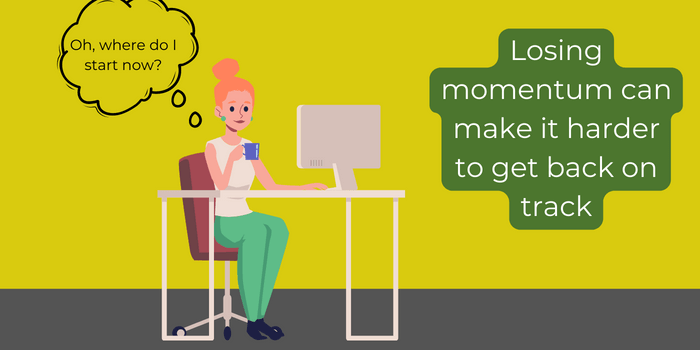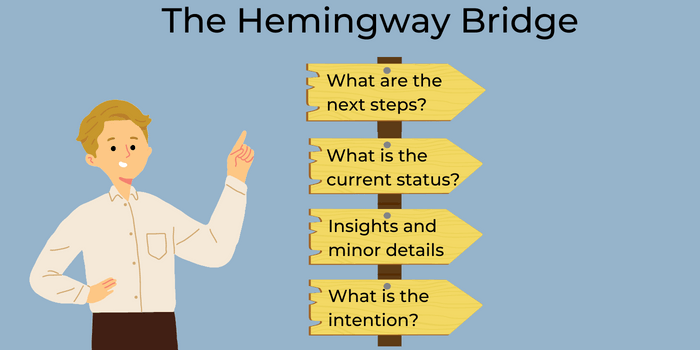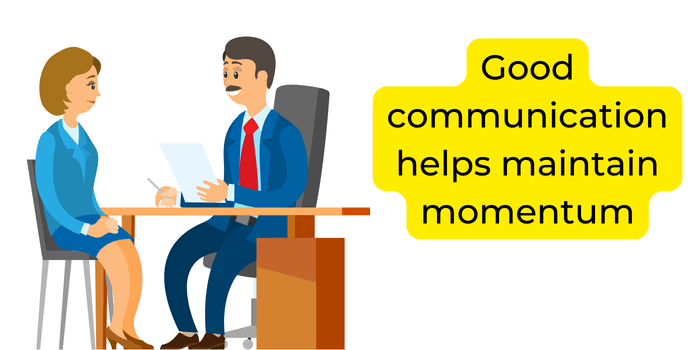On any given week I’m usually juggling at least 3 important projects, all of which require my attention. On top of that, there is routine shallow work and unforeseen ad hoc tasks.
Work rarely comes to us in a linear sequential form, allowing itself to be neatly scheduled into successively ordered time-blocks. It often arrives chaotically, messing up our carefully laid out plans.
You might be working on something when you are required to take up something else which is urgent and might take a few hours to complete.
By the time you finish and get back to the original task, you have lost your momentum and you struggle to pick up from where you left off.
The problem is compounded when the original task is put on the back burner, and a few days have passed before you’re able to get back to it. The natural resistance you feel combined with the friction of having to recollect all pertinent information can be a little too much.
But there is a way out.
Tiago Forte writes in The Second Brain, about a technique that he calls the Hemingway Bridge to solve this type of problem.
The Hemingway Bridge
Ernest Hemingway was a towering figure in American literature and one of the most influential writers of the 20th century.
Hemingway was a highly productive and prolific writer, producing a large body of work during his career. He wrote seven novels, six collections of short stories, and two non-fiction works, as well as countless articles, essays, and other pieces of writing.
He used a specific writing strategy to keep his momentum going.
Hemingway ended each writing session when he knew where the story was headed next. This allowed him to begin the next writing session with a clear direction.
Essentially, he built a bridge to the next day by ending today with clarity about the next plot point.
Tiago Forte calls this the Hemingway Bridge.
So how do you use this in your work?
Just before the end of your work session, during the last few minutes, capture a few key points about where to go from here.
Write them down in a doc or a digital note. Include things like the following.
- What are the next steps?
Right now the next steps are fresh in your mind and you know them intuitively. Ease the transition into your next block of work by thinking through the next steps and writing them down.
- What is the current status?
Are things going as per plan or are you struggling with some roadblock? Do you expect any future challenges?
- Insights and minor details
As you work on something, you generate insights on why something works or doesn’t work, or changes you need to make in the product or the workflow. Capture these details so you don’t have to carry them in your head, or worse yet, forget once you have stepped away.
- What is the intention?
Write down your intention for the next time you pick up the task. What is your goal for the next work session? What is the specific problem you will address?
Now, the next time you pick up the task, whether it is the next day or the next week or month, you have a set of thoughts already captured and waiting.
Once you have built the Hemingway Bridge, you can even work on other urgent tasks without worrying about losing the train of thought on this one.
Without capturing these points to bounce off from, the next work session will start with a lot of friction and you will struggle to ease into the flow.
Beware of negative momentum
If positive momentum builds on positive actions that move you forward, thoughtless actions can also lead to negative momentum.
Some of these thoughtless actions include allowing yourself to get distracted by social media, attempting to multitask by working on several things at once, not being quick to adapt to changing demands of the project etc.
I have written previously about poor work habits that can build negative momentum. There are also several attention management techniques that can be adapted to your working style, to improve your productivity. Do check them out.
Maintain clear lines of communication
Many times, projects slow down or completely stall because there is no clear communication among team members.
All team members must clearly know what is going on with the project at any given time, who is working on what, and what the overall progress is.
I am not going to go into project management strategies, but bear in mind that clear communication both at the individual and team level determines the momentum of any project.
In conclusion
The primary thing I wanted to highlight in this article was the Hemingway Bridge which you can use to create a rich set of jump-off points from one task block to the next.
But in the overall scheme of maintaining momentum for any task or project, there are also other factors that you need to consider:
- Setting clear goals
- Establishing a routine that includes time blocks for deep work
- Regularly reviewing and adjusting your progress
Stay organized and focused, with frequent time off to cool your brain and come back refreshed. There is no other shortcut to effectively maintain momentum and stay productive over the long term.





